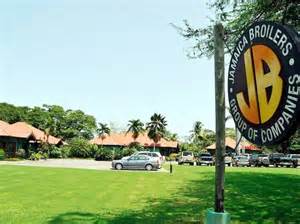Preliminary Estimates Indicate That The Region Grew By An Average Of 1.5% In 2013.
Debt sustainability, poverty reduction and increased prosperity require sustained growth. The Caribbean Development Bank (CDB) is focused on setting the stage for sustained growth and resilience in its BMCs by improving competitiveness, strengthening regional integration, climate proofing economic infrastructure and increasing national savings.
Medium-term policy imperatives center around generating sustained growth which requires a number of factors to occur. Improving the competitiveness of BMC’s includes:
1. Diversification to reduce export concentration,
2. The creation of competitive advantages in non-tourism areas,
3. Improving business facilitation,
4. Investing in infrastructure, including transportation and logistics, to reduce business costs and for greater integration into global supply chains, and
5. Upgrading telecommunications infrastructure for greater economic efficiency.
Sustained growth will also be achieved by strengthening regional integration to benefit from scale economies and to foster regional approaches to energy; climate proofing to reduce production and productivity losses that result from damage to infrastructure caused by weather events and climate change; and increasing national savings to reduce vulnerability to sudden stops in capital flows that attend global cyclical troughs and other global economic shocks.
With the exception of Antigua and Barbuda, Haiti, St. Kitts and Nevis and Trinidad and Tobago, at national savings among CDB’s BMCs, 15% of GDP over the last decade, is half the average rate in emerging and developing economies. Low savings usually translates into national liability accumulation, low reserve levels and dependence on foreign capital inflows to sustain aggregate demand generally, and investment specifically.
Sudden stops in capital flows, such as that precipitated by the recent global crisis, curtails growth by reducing investment, and/or forcing an adjustment in aggregate demand in response to reserve depletion.
International economic developments were reflected in regional sectoral outturns; Preliminary estimates indicate that the region grew by an average of 1.5% in 2013, up slightly from a revised figure of 1.2% for 2012. Higher incomes and employment in advanced economies and renewed flows of foreign direct investment (FDI) contributed to solid growth in construction activity and continued recovery in tourism in most of the Caribbean Developments Bank’s (CDB), Borrowing Member Countries (BMCs). At the same time, lower commodity prices had a dampening effect on mining and agriculture in some BMCs, but also assisted in containing inflationary pressures.
Despite lower commodity prices, growth was nevertheless led by commodity exporters. In Guyana, Haiti and Suriname, rates of expansion between 4% and 6% were driven by strong construction and agriculture outturns. Agro-processing also contributed to increased manufacturing output in Guyana. In addition, there were small but noteworthy contributions from the rapidly developing tourism industries in these economies.
Growth in Guyana and Suriname was supported as well by continued investment in mining, despite the fall-off in international commodity prices. Rather than lower oil prices, ongoing maintenance and reduced oil field yield, respectively, led to contractions in mining output in Belize and Trinidad and Tobago, the other major commodity exporters in the region. However, improved overall growth performances in these two economies reflected the general upturn in construction and tourism activity. Trinidad and Tobago also benefited from a rebound in manufacturing.
Moderate growth (1% to 3%) in Antigua and Barbuda, The Bahamas, Cayman Islands, Grenada, St. Kitts and Nevis, St. Vincent and the Grenadines and Turks and Caicos Islands was linked to the general improvement in construction and tourism.
However, economic activity was sluggish, flat or contracting in the remaining BMCs, as key service industries bucked regional trends. Negligible growth was estimated for Jamaica in 2013, following a marginal decline in 2012, based on indications that a first-half contraction due to underperforming agriculture, manufacturing and tourism was negated in the second half of the year by an improvement in tourism and growth in mining and quarrying.
Similarly, after contracting in 2012, economic activity is estimated to have been flat in Dominica, as declines in construction and agriculture were offset by increases in manufacturing and distribution and a turnaround in tourism and distribution.
In Montserrat, economic activity contracted slightly, driven by declines in the dominant public administration and construction sectors. The slight contraction estimated for Barbados in 2013 was driven by declines in tourism and construction activity. The Barbadian economy has remained stagnant since 2008, with growth ranging from -4.1% to 0.8% over the six-year period. Meanwhile, 2013 marked the sixth consecutive annual contraction in Anguilla and the second in both BVI and St. Lucia since 2009. Poor performances in construction in all three countries, as well in financial services in Anguilla and BVI, offset growth in tourism activity.
The robust growth in construction activity in most BMCs had positive spin-off effects on the distribution, financial services, real estate and transportation sectors. Notably, there was significant public investment in critical economic infrastructure, including roads in Antigua and Barbuda, The Bahamas, Belize, Jamaica and Turks and Caicos Islands, as well as construction of a new airport in St. Vincent and the Grenadines and airport expansions in Antigua and Barbuda and Turks and Caicos Islands.
In Haiti, despite ongoing issues of under-implementation of public investment projects, construction activity, including the post-earthquake reconstruction effort, continued to be a significant driver of overall output growth. There was also strong growth in private construction activity, including residential construction in Antigua and Barbuda, Belize and Guyana, together with significant FDI-driven tourism related development in The Bahamas, Belize, Cayman Islands, Grenada, St. Kitts and Nevis, St. Vincent and the Grenadines and Turks and Caicos Islands.
In contrast, declines in construction were recorded in the five BMCs for which overall growth is estimated to have declined — Anguilla, Barbados, BVI, Montserrat and St. Lucia. In these BMCs, declining FDI for tourism-related projects, lower domestic demand and fiscal constraints on government capital investment had a dampening impact on construction activity. There was also a significant slump in construction in Dominica, as public sector projects neared completion, while private activity remained sluggish.
Based on the available data on visitor arrivals, it is estimated that most regional destinations saw a continued recovery in tourism output in 2013. This assessment reflects generally positive arrivals trends in the higher-value-added stay-over segment of the industry, offsetting the impact of challenges in the cruise segment.
With the ongoing economic recovery in major extra-regional source markets, stay-over arrivals data available for 7 to 11 months of the year show increases across most destinations. Notably, the European market has generally shown improvements relative to 2012, when deeply recessionary conditions and the application of the UK Air Passenger Duty (APD) had depressed arrivals from that source. However, some regional destinations have registered overall declines in stay-over arrivals, attributable largely to a combination of airlift challenges (such as airline closure and route cancellations) in the US and/or intraregional markets, as well as the high cost of intra-regional travel. These factors have been particularly important in the negative outturns for destinations, that depend heavily on the US and/or intra-regional markets like Antigua and Barbuda, The Bahamas, Barbados, Dominica, Grenada, and St. Vincent and the Grenadines.
BMC performances in the cruise segment of the tourism industry have been more mixed. Destinations such as The Bahamas, Barbados, Belize and St. Kitts and Nevis recorded strong growth in cruise arrivals, whereas others such as BVI, Cayman Islands, Dominica and Grenada registered significant declines. The ongoing restructuring within the Caribbean cruise industry has resulted in the withdrawal of smaller vessels, which has negatively affected those regional destinations lacking the facilities to cater to the new mega-ships plying Caribbean routes. There have also been indications that some destinations need to improve their product offerings.
Strong growth in manufacturing was recorded in Trinidad and Tobago and Guyana, the major producers in the Region, but outturns were mixed otherwise.
Manufacturing growth in Trinidad and Tobago was driven by a rebound in cement production from a significant dip in 2012 attributable to industrial unrest. In Guyana, record production levels of milled rice more than compensated for a decline in sugar production and reduced output of alcoholic beverages, pharmaceuticals and paints.
Following six consecutive years of decline, there was a slight recovery in manufacturing output in Barbados, based mainly on increased food production, while beverage, soap and paint production boosted manufacturing activity in Dominica. In contrast, manufacturing declined in Jamaica, reflecting a combination of weak domestic demand and lower ethanol production; and in St. Kitts and Nevis, as exports of electrical components to the US and production of beverages for the domestic market fell.
Following on the weak performances of 2012, mining output in most of the major producers in the Region remained stagnant, in the face of continued declines in international commodity prices. For example, Guyana and Suriname recorded declines in bauxite production on account of weak external demand, as reflected in lower prices.
Jamaica recorded an increase in alumina production, but this was driven by higher capacity utilisation following the resolution of technical problems that previously affected the industry. Rather than lower oil prices, oil extraction was mainly adversely affected by reduced yield of the oil fields, reserve depletion and ongoing maintenance, in Belize, Suriname and Trinidad and Tobago, respectively.
With regard to gold, Suriname and Guyana both recorded increases in output, albeit at a lower rate of increase, reflecting continued investment in small-scale gold mining activity. Meanwhile, diamond mining in Guyana benefited from the fact that diamond prices have moved counter to the general downtrend in commodity prices, resulting in a surge in diamond declarations. Based on gold and diamond declarations, double-digit overall growth is estimated for Guyana’s mining sector, while estimates of growth in mining value-added for Suriname are bolstered by strong public and private capital investment in the sector.
In addition to lower commodity prices, crop disease and adverse weather conditions were critical factors in declining output for some agricultural sub-sectors and/or BMCs, whereas others were able to rebound from previous impacts of these factors. For example, sugarcane output declined in Guyana on account of weather-related and operational challenges, as well as industrial unrest, although overall agricultural output nevertheless expanded, as improved yields and expanded acreage under cultivation led to record growth in rice production.
Meanwhile, agriculture in Jamaica was generally negatively affected by the passage of Hurricane Sandy in 2012 and drought in 2013. The weather was also a factor in Belize, resulting in declines in citrus and banana output, while Black Sigatoka leaf spot disease continued to affect the banana industry in Dominica. Contrasting examples of BMCs that rebounded from the effects of bad weather and crop disease include: Grenada, where nutmeg and mace output increased as trees have started to recover from the impact of Hurricane Ivan; Haiti, which has seen a stronger than anticipated rebound in coffee and cocoa production from the effects of Hurricanes Isaac and Sandy; and the recovery in banana output in St. Lucia and St. Vincent and the Grenadines from the effects of Hurricane Tomas and Black Sigatoka infestation.
Notwithstanding the general strengthening of economic activity, unemployment levels remained high across the region, while inflationary pressures remained subdued.
Consumer price inflation in most regional economies continued to moderate in line with international commodity prices, with some BMCs even experiencing deflationary conditions. Average inflation for the region is therefore estimated at 2.3% in 2013, down from 5.0% and 3.5% in 2011 and 2012, respectively. However, higher inflation in Jamaica mainly reflected depreciation of the exchange rate.
Meanwhile, five BMCs for which 2013 labour force data are available reported double-digit rates of unemployment: The Bahamas’ annual jobless rate as measured in May was 16.2%; the annual averages for Barbados, Belize and Jamaica were 11.7%, 12.9% and 15%, respectively; and the unemployment average to September for St. Lucia was 23.8%. The rate for Belize represented an improvement over the corresponding period in 2012.
However, the figures for The Bahamas, Jamaica and St. Lucia marked record highs, reflecting job-less growth in The Bahamas and stagnant economic activity in Jamaica and St. Lucia.
For Barbados, a slight increase in unemployment reflected the initial impact of public sector lay-offs aimed at drastically reducing the wage bill over the medium term, which got underway in the last quarter of 2013. Anecdotal evidence indicates that unemployment levels also remained elevated in most other BMCs, as job creation continued to lag behind the recovery in output.
(Source CDB Annual Report 2013 – Volume One Our Caribbean Economies And Global Context)

 Businessuite Markets3 weeks ago
Businessuite Markets3 weeks ago
 Businessuite News241 week ago
Businessuite News241 week ago
 Leadership Conversations4 weeks ago
Leadership Conversations4 weeks ago
 Corporate Feature1 week ago
Corporate Feature1 week ago
 Businessuite News242 days ago
Businessuite News242 days ago
 Businessuite News24 International1 week ago
Businessuite News24 International1 week ago
 Businessuite Women2 weeks ago
Businessuite Women2 weeks ago
 Business Insights3 weeks ago
Business Insights3 weeks ago







